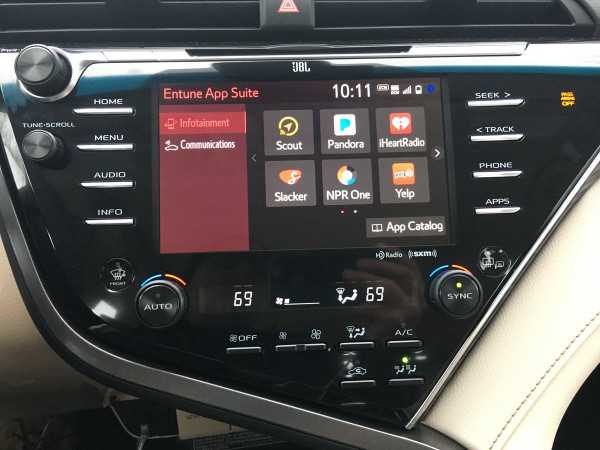Automotive Grade Linux is an open-source project by the Linux Foundation to produce a single platform for the entire automotive industry. The project has been contributed to by most major auto manufactures including Toyota, Volkswagon, Nissan and many more. It has also been used on infotainment systems in production cars like the Toyota Camry, Prius and Subaru Outback.

#History AGL was launched in 2012 with the founding members who include DENSO, Texas Instruments, Toyota, NVIDIA, Nissan and Jaguar Land Rover. There are currently 146 members that are part of the AGL project. The first release was in 2014 and was based on the Tizen operating system that Samsung built, this release was primarily used for demo purposes. AGL then moved into using a Unified Code Base distribution, they released the first version based on the UCB in 2016 and it was called Agile Albacore. With each release, AGL members have added support for over the air updates, speech recognition APIS, rear seat displays, electronic instrument clusters and CAN support. The latest release is 9.0 Itchy Icefish which was released in April 2020.

#Competition The hope for the Automotive Grade Linux is to replace the current QNX systems used in cars as QNX is aging and has licensing fees manufactures don’t want to pay. This will take some time though as QNX is used for other car uses like Autonomous Driving and AGL is not certified for these kinds of tasks yet. Another competitor on the infotainment side is Android Automotive, Google’s operating system takes the approach that doesn’t allow automakers to customize the user experience. Android Automotive will be debuting in the Volvo offshoot Polestar 2 later this year and coming to some other models in 2021. Automakers face the risk that customers will want the Google system because of its greater integration with Google services but will not be able to differentiate their car infotainment systems which have become a make or break feature in recent times.

Android Automotive is looking to be a major competitor to AGL
#Current Implementations Automotive Grade Linux is currently used in a number of production cars infotainment systems, these include the Toyota Entune 3.0 system, Mazda 3 and the 2020 Subaru Legacy. The most major implementation so far is the Entune 3.0 system though. Entune is based of Automotive Grade Linux and runs in a number of cars with different layouts, from the horizontally more traditional looking Camry infotainment system to the vertical more futuristic Prius prime display. Entune has inbuilt maps using Scout GPS, Apple CarPlay and Android Auto support while also being able to offer a sleek user interface for consuming content from your mobile device.

#Taking it for a Spin Automotive Grade Linux is easiest to run on a Raspberry Pi, both the three and four are supported but the four runs much faster. The easiest way to get it running is to clone the SD card image available here for the Pi 3 and Pi 4. On windows we can use Win32DiskImager and then select the WIC file downloaded below, then hit flash and it flash the image onto the SD card.

Next, we can insert the SD card into the Raspberry Pi and plug the power in, the device will then boot and after a while will show the AGL home screen, from here we can see all the demo applications, these range from a media player, HVAC, Dashboard, Navigation, etc…
Note that this is a demo and most of the functions don’t work but can be implemented if you put enough effort in to develop the implementation for your environment. We can see its running pretty slow on the Pi 3 and that’s just due to the device being fundamentally slower than most modern devices.
#Summary Overall Automotive Grade Linux is an interesting project in the automotive world that looks to be a promising alternative for automakers replacing the QINX systems currently used and competing with the new Android Automotive systems on the horizon. If you have the chance to give the demo a shot please tell me what you think about it in the comments below.
